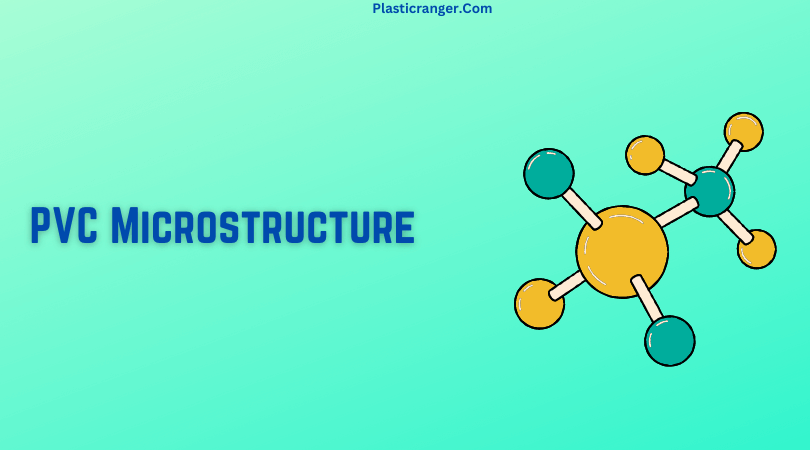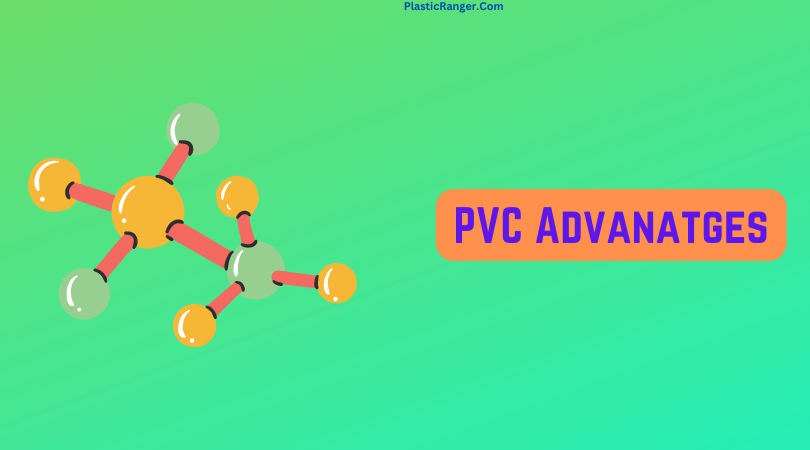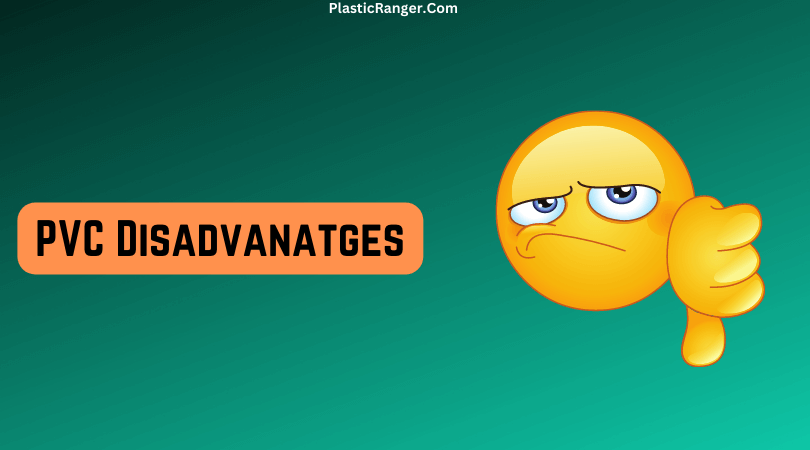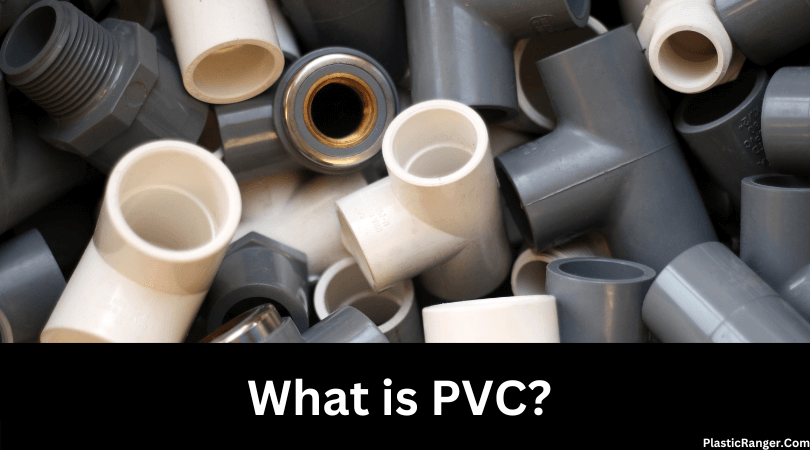What is PVC Plastic
PVC, also known as Vinyl, is a thermoplastic polymer widely used in the construction industry for manufacturing door and window profiles, pipes for drinking and wastewater, wire and cable insulation, medical devices, and more.
It is considered the third-largest plastic material by volume globally, following polyethylene and polypropylene.
This material is available in granules or powder and appears to be a white and brittle solid.
With its versatility and advantageous properties, such as lightweight, durability, affordability, and processability, PVC is increasingly used to replace traditional construction materials like wood, metal, concrete, rubber, ceramics, and more.
Polyvinyl chloride is one of the oldest plastic materials, having been synthesized in 1872 and commercially produced by the B.F. Goodrich Company during the 1920s.
In contrast, numerous common plastic materials were not synthesized and commercially viable until the 1940s and 1950s.
Basic Configurations of PVC
- Flexible PVC, also known as PVC-P, has a density of 1.1-1.35 g/cm3 and is produced by adding compatible plasticizers to PVC, decreasing the material’s crystallinity. The addition of these plasticizers results in a more flexible and transparent plastic.
- Rigid PVC, also known as UPVC, PVC-U, or uPVC, has a density of 1.3-1.45 g/cm3 and is a stiff and economical plastic that offers high resistance to impact, water, weather, chemicals, and corrosive environments.
- Molecular Oriented PVC, also known as PVC-O, is formed by reorganizing the amorphous structure of PVC-U into a layered structure. This process produces a material with enhanced physical characteristics, such as increased stiffness, fatigue resistance, and lightness.
- Chlorinated Polyvinyl Chloride (CPVC) is produced by chlorinating PVC resin, resulting in a material with a high chlorine content that offers high durability, chemical stability, and flame retardancy. This material can withstand a wider range of temperatures.
- Finally, Modified PVC, also known as PVC-M, is an alloy formed by adding modifying agents to the material, which results in enhanced toughness and impact properties.
How is PVC Made?

Vinyl chloride monomer (VCM) is created through the chlorination of ethylene followed by the pyrolysis of the resulting ethylene dichloride (EDC) in a cracking unit.
The polymerization of vinyl chloride monomer (VCM) produces PVC, which has a glass transition temperature of 70-80°C.
There are two standard methods used to produce PVC commercially:
- Suspension PVC (S-PVC)
- Bulk or Emulsion (E-PVC)
Suspension PVC (S-PVC)
In the Suspension PVC (S-PVC) process, the monomer, the polymerization initiator, and other additives are introduced into a pressure-tight reactor.
The reaction vessel’s contents are continuously mixed to maintain suspension and ensure uniform particle size of PVC resin.
Typically, suspension polymerized PVC has a mean particle size of 100-150 µm with a 50-250 µm range.
S-PVC grades are formulated to meet extensive requirements, such as high plasticizer absorption for flexible products, high bulk density, and good powder flow for rigid extrusion.
Suspension polymerization accounts for 80% of PVC production worldwide.
Bulk or Emulsion (E-PVC)
In the Bulk or Emulsion (E-PVC) process, surfactants (soaps) disperse the vinyl chloride monomer in water.
The monomer is trapped inside soap micelles and is protected by the soap, allowing polymerization to occur using water-soluble initiators.
The primary particles are solid, smooth-surfaced spheres that cluster into irregularly shaped aggregates, with a mean particle size of 40-50 µm and a range of 0.1-100 µm.
E-PVC resins are used in various specialty applications such as coating, dipping, or spreading.
Microstructure

PVC polymers are linear and robust.
The monomers are arranged predominantly in a head-to-tail configuration, with chlorides alternating on carbon centers.
PVC exhibits a primarily atactic structure, resulting in a random distribution of chloride centers.
Some degree of syndiotactic in the chain contributes a small percentage of crystallinity, significantly impacting the material’s properties, such as melting point.
With chlorine accounting for approximately 57% of the mass, PVC’s properties differ significantly from those of structurally related materials, such as polyethylene.
Additionally, PVC has a higher density than these associated plastics.
General Properties of PVC
| Mechanical Properties | ||
| Property | PLASTICIZED (FLEXIBLE) PVC |
UNPLASTICIZED (RIGID) PVC
|
| Elongation at Break, % | 100 – 400 | 25 – 80 |
| flexural Modulus (Stiffness), GPa | 0.001 – 1.8 | 2.1 – 3.5 |
| Hardness Rockwell M | 1 | 1 – 70 |
| Hardness Shore D | 15 – 70 | 65 – 90 |
| Toughness, J/m | – | 20 – 110 |
| Toughness, J/m | – | 20 – 110 |
| Physical Properties | ||
| Property | PLASTICIZED (FLEXIBLE) PVC |
UNPLASTICIZED (RIGID) PVC
|
| Density, g/cm3 | 1.3 – 1.7 | 1.35 – 1.5 |
| Glass Transition Temperature, °C | -50 – -5 | 60 – 100 |
| Shrinkage, % | 0.2 – 4 | 0.1 – 0.6 |
| UV Light Resistance | Fair | Fair |
| UV Light Resistance | Fair | Fair |
| Electrical Properties | ||
| Property | PLASTICIZED (FLEXIBLE) PVC |
UNPLASTICIZED (RIGID) PVC
|
| Arc Resistance, sec | – | 60 – 80 |
| Dielectric Strength, kV/mm | 10 – 30 | 10 – 40 |
| Dissipation Factor x 10-4 | 400 – 1600 | 60 – 200 |
| Volume Resistivity x 1015, Ohm.cm | 10 – 16 | 15 – 16 |
PVC is a versatile and economical material with a range of advantageous properties, including:
Durability: PVC is resistant to weathering, chemical decay, corrosion, impact, and abrasion, making it a popular choice for outdoor and long-lasting products.
Flame Retardancy: PVC’s high chlorine content makes it self-extinguishing, with an oxidation index of ≥45. It provides excellent fire performance and mechanical properties when combined with phosphate ester plasticizers and antimony trioxide.
Electrical Properties: PVC has excellent insulation properties due to its strong dielectric strength.
Chemical Resistance: PVC possesses some exceptional chemical properties. Hence it is resistant to all inorganic chemicals and has excellent resistance to diluted acids, alkalis, and aliphatic hydrocarbons.
It is susceptible to ketone attack, while some grades may swell or be attacked by chlorinated and aromatic hydrocarbons, esters, aromatic ethers and amines, and nitro compounds.
Cost-Performance Ratio: PVC has favorable mechanical and physical properties, offering exceptional cost-performance benefits. It has a long lifespan and requires minimal maintenance.
Mechanical Properties: PVC is lightweight, abrasion-resistant, and tough.
How Additives Boost PVC Properties?
PVC resin obtained through polymerization is highly unstable due to its low thermal stability and high melt viscosity, making it unsuitable for direct use in finished products.
To improve and modify its properties, various additives, such as heat stabilizers, UV stabilizers, plasticizers, impact modifiers, fillers, flame retardants, pigments, and more, are required before processing it into final products.
The choice of additives to improve the polymer’s properties depends on the end-use application’s specific requirements. For example:
Plasticizers
Plasticizers such as Phthalates, Adipates, triflates, etc., are added to vinyl products to improve their rheological and mechanical performance, including toughness and strength, by increasing their temperature.
The selection of plasticizers for the vinyl polymer is influenced by various factors, such as
- polymer compatibility
- low volatility
- cost.
Heat Stabilizers
PVC usually has a low level of thermal stability. However, stabilizers can enhance this by preventing polymer degradation under processing or light exposure conditions.
Heating vinyl compounds trigger a self-accelerating dehydrochlorination reaction, but stabilizers can effectively counteract the HCl produced, thereby extending the longevity of the polymer.
When choosing a heat stabilizer, it’s essential to consider the following:
- Technical specifications
- Regulatory approvals
- Cost
Fillers
Fillers are included in PVC compounds for multiple purposes. Nowadays, a filler has the potential to enhance performance and provide added value in innovative ways while maintaining low formulation costs.
Calcium carbonate, titanium dioxide, glass, talc, calcined clay, and other similar materials are frequently utilized as fillers in PVC. They help to:
- Enhance stiffness and strength
- Boost impact resistance
- Introduce color,
- Opacity and conductivity
- and provide other benefits
External Lubricants and Other Additives
External lubricants aid the smooth flow of PVC melt through processing equipment, while internal lubricants reduce melt viscosity, prevent overheating, and ensure good color in the final product.
Additional additives, such as processing aids and impact modifiers, enhance PVC’s mechanical and surface properties.
Processing of PVC
Several processes transform PVC resin into a thermoplastic melt, including extrusion, calendering, injection molding, and stretch blow molding.
Before converting PVC resin into a thermoplastic material, thoroughly mixing it with the necessary additives is essential.
When processing rigid PVC, thermal stabilization is needed to prevent material decomposition.
PVC is sensitive to thermal history, and the processing temperature range is limited.
Drying PVC before use is recommended to ensure successful processing, with a moisture level lower than 0.3%. For plasticized PVC, drying before processing is highly recommended.
| Plasticized PVC | Rigid PVC |
| Injection Molding | |
| Melt temperature: 170-210°C |
Melt temperature: 170-210°C
|
| Mold temperatures: 20-60°C |
Mold temperatures: 20-60°C
|
| Mold shrinkage: 1-2.5% |
Mold shrinkage: 0.2-0.5%
|
| Material Injection Pressure: Up to 150 MPa |
Recommended Screw with an L/D ratio of 15-18
|
|
Packing Pressure: Up to 100 MPa
| |
| Extrusion | |
| To prevent premature thermal degradation, extrusion temperatures are maintained at 10-20°C lower than those used in injection molding. | |
Advanatges of PVC Plastic

PVC offers various industries various essential benefits, making it one of the most prevalent and favored plastics in the market. These benefits comprise:
- Polyvinyl Chloride is readily accessible and comparably affordable.
- It is highly dense, rendering it hard and resistant to impact deformation compared to other plastics.
- PVC also boasts remarkable tensile strength and is highly resistant to chemicals and alkalis.
- PVC products can achieve exceptional clarity and transparency due to the material’s physical properties. This makes them ideal for applications where constant monitoring of fluid flow is required. Additionally, if a color-coded application is necessary, PVC can be formulated in virtually any color.
- The absence of sources of infection is a fundamental requirement in medical product applications. Using steam, radiation, or ethylene oxide, PVC products can be easily sterilized.
- Polyvinyl chloride is highly compatible with nearly all pharmaceutical products in healthcare facilities today. It also boasts exceptional water and chemical resistance, which helps maintain the solutions’ sterility.
- PVC’s resistance to chemical stress cracking is crucial in ensuring that medical products can function reliably and consistently, even when subjected to prolonged and demanding usage.
Disadvantages of PVC

- Health Concerns are considered to be the main disadvantage of PVC plastic. It is widely believed that the chemical makeup of PVC leads to the production of harmful byproducts during both its production and decomposition.
- Another drawback of using polyvinyl chloride is sustainability. Intending to achieve zero carbon emissions by 2050, sustainability has become a top priority for businesses and individuals alike, reflecting the current climate.
Applications
PVC is one of the most utilized thermoplastics in the world, and its applications can be found in various sectors where it makes tremendous contributions toward making people’s lives easier.
Here are the most salient applications of polyvinyl chloride:
Construction
For more than 50 years, PVC has been widely utilized in various construction products due to its robust, lightweight, durable, and adaptable properties.
PVC material is particularly suitable for window profiles due to these characteristics.
Additionally, PVC’s natural flame retardancy and outstanding electrical insulation make it an excellent material for cabling applications.
Also, PVC is best known to the general public for its pipes. PVC Pipe Sizes are in line with residential requirements compared to other pipe materials, mostly used for industrial purposes.
Examples of PVC construction products include:
- Pipes and fittings
- Window and door profiles
- Cable and services ducting
- Roofing and ceiling systems
- Internal and external cladding
- Wallcoverings
- Flooring
- Rainwater, soil, and waste systems
- Power, data, and telecoms wiring and cables
Healthcare
Typical applications of PVC in healthcare include:
- Blood and plasma transfusion sets
- Catheters and cannulae
- Blood vessels for artificial kidneys
- Containers for intravenous and solution giving sets
- Shatter-proof bottles and jars
- Surgical and examination gloves
- Endotracheal tubing
- Blood bags
- Endotracheal tubing
- Overshoes
Automotive
Typical applications of PVC in the Automotive sector include:
- Interior Door Panels and Pockets
- Instrument panels
- Mud flaps
- Underbody Coating
- Seat Coverings
- Sun Visors
Signs
PVC is manufactured in thin flat sheets of various colors and thicknesses.
Flat PVC sheets are often expanded to form voids within the material (closed-cell PVC foamboard) to increase the thickness without adding weight and keep the cost minimal.
Saws and rotary cutting equipment are used to cut the sheets.
Thin, adhesive-backed films known as vinyl, which come in various colors and transparency levels, can also be produced using plasticized PVC.
These films are usually cut using computer-controlled plotters or printed using wide-format printers.
They are used to create various commercial signage products, including car body stripes and stickers.
The Conclusion
PVC plastic finds widespread use in several industries, including construction and healthcare, owing to its affordability, durability, and flexibility. Despite its advantages, it can negatively impact the environment and human health if not handled responsibly.
Hence, responsible use and disposal of PVC plastic, exploration of alternative materials, and promotion of recycling and sustainable practices can significantly reduce its impact on the environment and human health.
Quick Navigation

